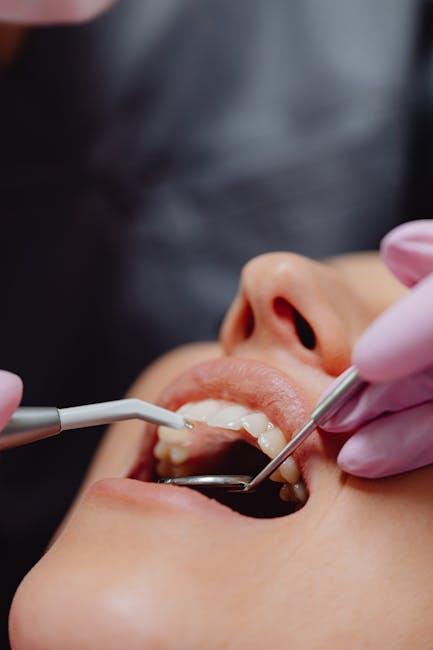
The Barriers to Oral Health Care Illustration – Centers for Medicare & Medicaid Services | CMS (.gov)
Access to oral health care remains a critical issue for many Americans, despite advances in dental medicine and expanded insurance coverage options. The Centers for Medicare & Medicaid Services (CMS) offers a compelling illustration of the barriers faced by individuals trying to obtain adequate oral health care. This article explores these barriers in-depth, uncovers their impact on public health, and suggests practical tips to overcome them. Whether you’re a patient, caregiver, or healthcare professional, understanding these obstacles can guide better oral health outcomes for everyone.
Understanding the CMS Barriers to Oral Health Care Illustration
The CMS illustration serves as an educational tool that highlights the complex challenges many face when seeking dental care through Medicare, Medicaid, or other health programs. The illustration pinpoints key factors contributing to limited oral health access, including economic, systemic, and social variables.
Key Barriers Highlighted by CMS
- Limited Coverage in Medicare: Unlike Medicaid, Medicare does not generally cover routine dental care, creating a significant gap in access for seniors and disabled individuals.
- Variability in Medicaid Dental Benefits: Medicaid dental coverage varies widely by state, causing inconsistent access for low-income populations.
- Workforce Shortages: A limited number of dental providers accept Medicare or Medicaid patients due to reimbursement rates and administrative burdens.
- Transportation & Geographic Barriers: Rural and underserved urban areas frequently lack nearby dental clinics or specialists, complicating access.
- Health Literacy & Awareness: Many individuals are unaware of available dental benefits or importance of routine oral health care, reducing utilization rates.
- Affordability: Even with some insurance coverage, out-of-pocket costs can be prohibitive for routine and emergency dental treatments.
- Cultural and Language Barriers: Diverse populations may face challenges communicating with providers or understanding care instructions, impacting oral health outcomes.
Why Addressing These Barriers Matters
Oral health is closely tied to overall health. CMS emphasizes the need for comprehensive dental care to prevent systemic issues such as cardiovascular disease, diabetes complications, and more. Neglecting oral health can lead to costly emergency interventions and decreased quality of life. Therefore, resolving barriers unlocks a multitude of benefits for individuals and communities.
Benefits of Improving Access to Oral Health Care
- Improved general health and reduction of chronic disease complications.
- Enhanced quality of life and self-esteem through healthy teeth and gums.
- Reduced healthcare costs by preventing advanced oral diseases.
- Greater equity in health outcomes among disadvantaged populations.
- Supports healthy aging with functional dentition and pain-free chewing.
CMS Initiatives and Strategies to Overcome Barriers
CMS continually develops programs aimed at reducing these barriers by expanding Medicaid dental coverage, piloting alternative payment models, and supporting workforce development. For example, some states have enhanced adult dental benefits under Medicaid, and pilot projects encourage integrating dental with primary care.
| CMS Strategy | Description | Impact |
|---|---|---|
| Expanded Medicaid Dental Benefits | Encourages state extensions of comprehensive dental coverage for adults | Improved oral health outcomes and reduced emergency dental visits |
| Innovative Payment Models | Supports value-based care to incentivize preventive services | Higher provider participation and better patient engagement |
| Workforce Development Programs | Funds training for dental hygienists and mid-level providers | Expanded access in underserved and rural communities |
| Oral Health Literacy Campaigns | Public outreach to increase awareness of oral health benefits and care importance | Increased utilization and early intervention |
Practical Tips for Navigating Oral Health Barriers
Patients and caregivers can take proactive steps to minimize the impact of oral health barriers. Here are some practical tips aligned with CMS recommendations:
- Review Your Insurance Coverage: Understand what dental services Medicare or Medicaid covers in your state.
- Seek Federally Qualified Health Centers (FQHCs): These centers often provide dental services on a sliding fee scale.
- Schedule Regular Preventive Visits: Early care prevents costly emergency treatments and destroys disease progression.
- Utilize Tele-dentistry: When available, virtual consultations can help triage urgent needs.
- Advocate for Your Care: Communicate clearly with your dentist and ask about financial assistance or payment plans.
- Increase Oral Health Literacy: Utilize trusted CMS resources and educational materials.
Case Study: Success in Overcoming Oral Health Barriers
In 2022, CMS collaborated with a midwestern state to expand adult Medicaid dental benefits and establish mobile dental units in rural counties. Within one year, the state saw a 35% increase in preventive dental visits and a 25% drop in hospital admissions due to oral health emergencies.
Community leaders credit the success to:
- Expanded coverage reducing the affordability barrier.
- Mobile units alleviating transportation and geographic challenges.
- Culturally tailored outreach improving awareness in minority populations.
Firsthand Experience
Jane, a Medicaid beneficiary from the project area, shared, “Before, I avoided the dentist because I couldn’t afford it, and my nearest clinic was hours away. Now, the mobile unit comes to my town, and the care is covered by Medicaid. My oral health has improved so much—I’m healthier and more confident.”
Conclusion
The Centers for Medicare & Medicaid Services (CMS) highlights significant barriers to accessing oral health care that affect millions of Americans. These obstacles—from limited insurance coverage and provider shortages to geographic and literacy challenges—have serious consequences for individual and public health. Through CMS initiatives, educational outreach, and ongoing reforms, progress is being made. However, continued awareness, advocacy, and resource utilization remain key for overcoming these barriers.
By understanding these challenges and applying practical strategies, patients, providers, and policymakers can work together to enhance oral health care access and improve the quality of life for vulnerable populations nationwide.


